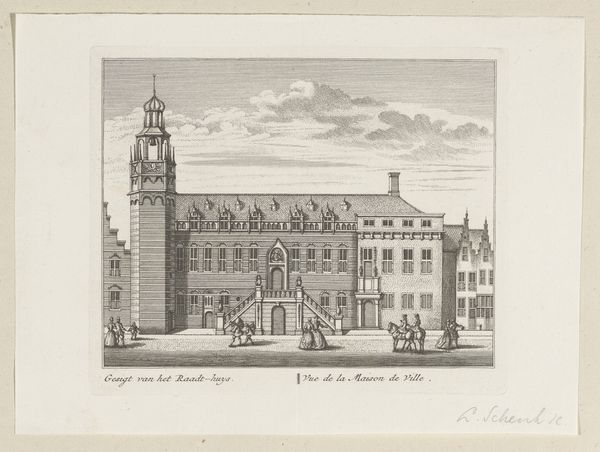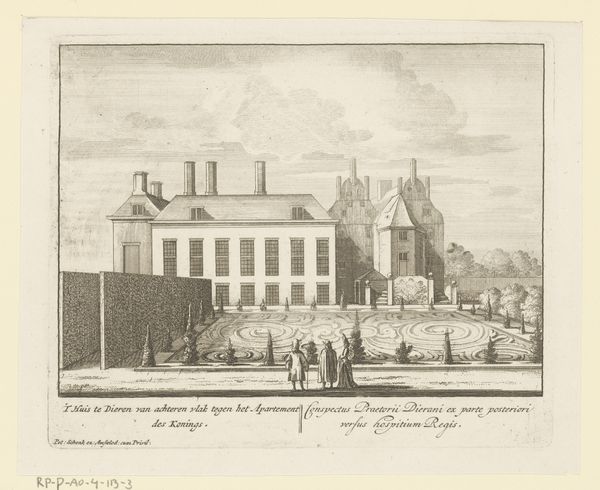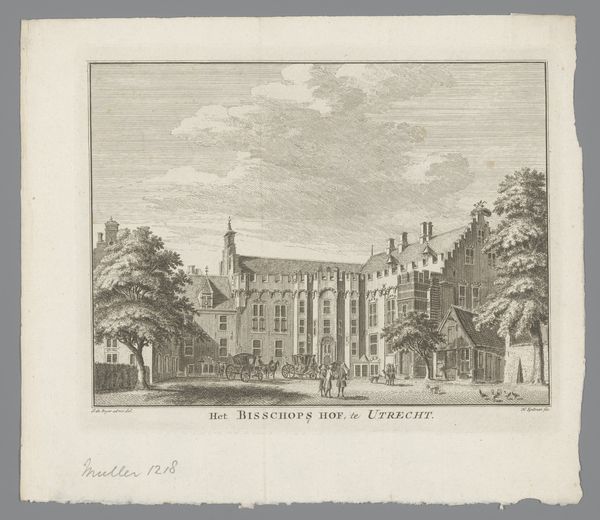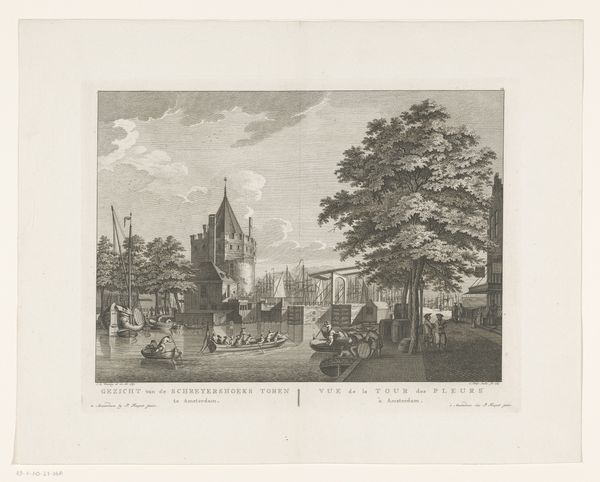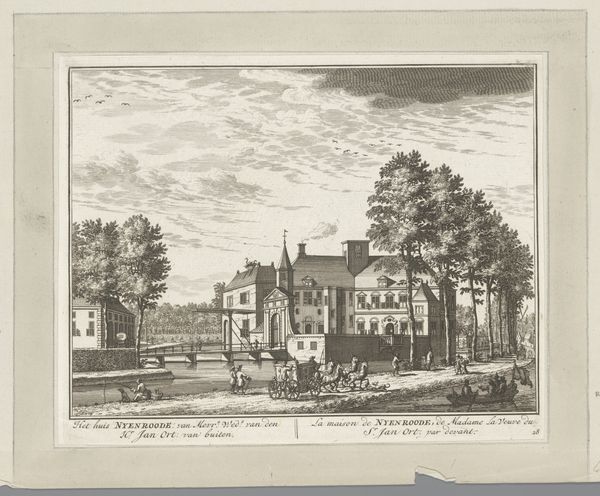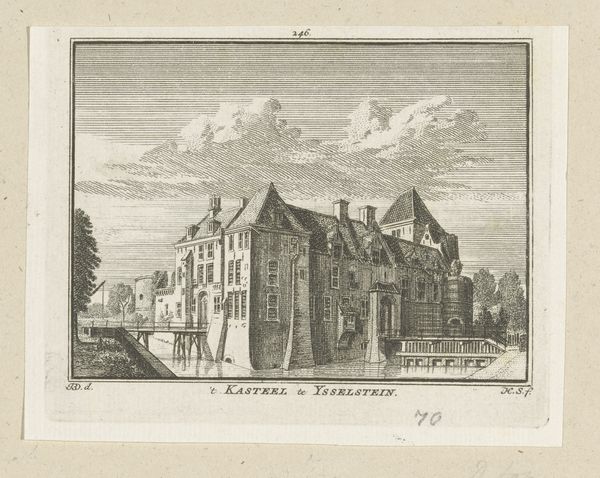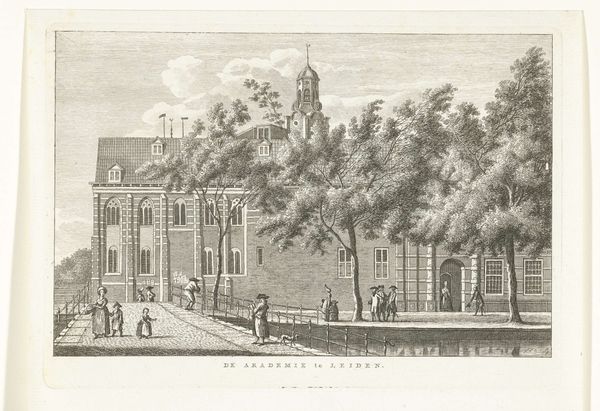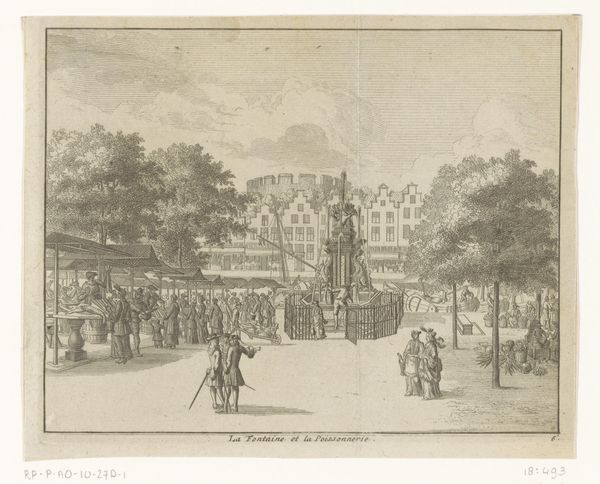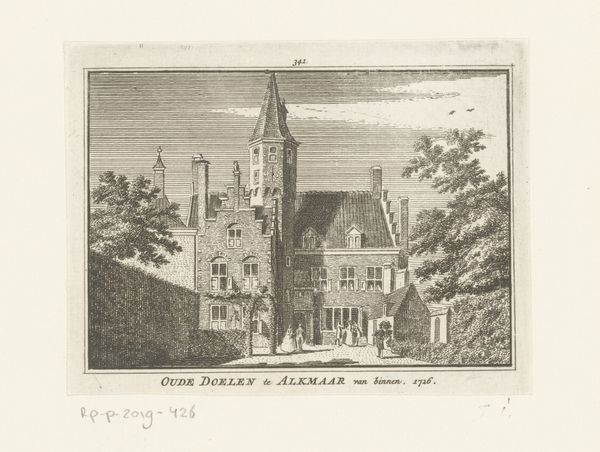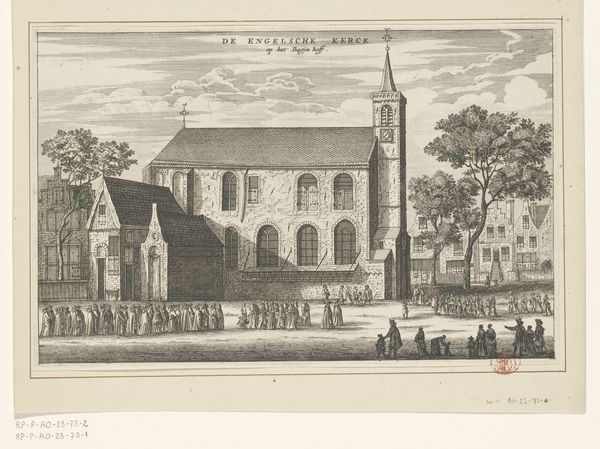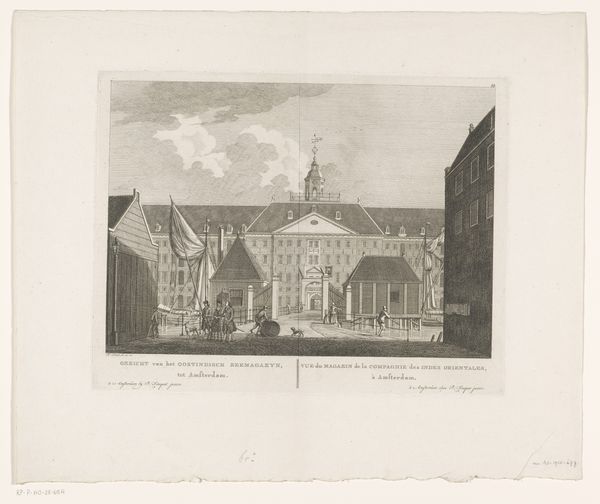
Dimensions: height 162 mm, width 205 mm
Copyright: Rijks Museum: Open Domain
Editor: This is an engraving, entitled "Gezicht op Slot Zuylen," placing us sometime between 1760 and 1800. It pictures a cityscape using line as the primary medium. The detail is quite impressive, almost photographic. What's most interesting to you when you look at this piece? Curator: For me, it’s less about the representational image and more about understanding the material processes and social context. Consider the labour involved in creating this print. Engraving demanded a highly skilled artisan, shaping a metal plate, painstakingly transferring an image to be reproduced en masse. Who was commissioning these prints and for what purpose? Were these affordable for the average citizen, or a commodity of the wealthy? Editor: So you're thinking about the print as a form of production, who had access to it, and the work involved in making it. I guess I hadn't considered that the image itself would be less important. Curator: Exactly! How does the print as a material object reflect the society that produced and consumed it? Does the depiction of a genteel scene conceal the economic realities of its production? It represents a view of elite life, but the print itself, its circulation, potentially brought that vision to a wider, less affluent audience. What happens to social hierarchies when images like this circulate? Editor: That’s a really interesting point. It's easy to just see a pretty picture but thinking about its production and consumption definitely shifts the focus. I wonder, did the artisan have any say in the images they engraved? Curator: A vital question! Researching the engraver’s biography might offer insight into their agency, revealing the complex interplay between artistic expression, economic necessity, and social pressures within the means of production. This wasn't simply replication; it was an act of interpretation filtered through skilled labor. Editor: I've definitely got a new perspective to consider now; seeing art as tied to labour and societal structures changes things. Curator: Precisely. Art isn't born in a vacuum, it's born of materials, of skill, and most importantly, of its own socio-economic environment.
Comments
No comments
Be the first to comment and join the conversation on the ultimate creative platform.
